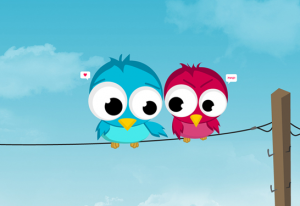Twitter isn’t all @ signs and retweets, it’s about building loyal customers
 Everyone tells you how to get more Twitter followers, but how many tell you what to do when you get them? Because it’s that step in the process that either keeps them on your “list” or allows them to slip away.
Everyone tells you how to get more Twitter followers, but how many tell you what to do when you get them? Because it’s that step in the process that either keeps them on your “list” or allows them to slip away.
In the several social media accounts that I manage, I may discuss many different topics, with a broad range of unique people. I have target audiences who are doctors and nurses, email marketers, small businesses, holistic therapists and many more, including publishers (of course). The topics of discussion are all uniquely different from one another, but the strategies I’ve used to effectively keep them interested are not.
Since we’re all friends here, I’m going to give you my five best strategies for building more meaningful relationships with your Twitter followers and I hope you’ll report back here on how your relationships have evolved.
Answer questions in the community:
Nobody likes you when you’re all business, all the time. If you invited a colleague to a BBQ, would he show up in a suit and park himself with a laptop at the nearest picnic table? Of course not. If there are business-casual questions and conversations going on in your Twitter feed, so don’t be afraid to chime in. For example, we hold one of our annual conferences in Napa almost every spring, so we have no problem discussing wine or wineries in the Napa area which otherwise may seem too causal. If you’re looking for questions to answer, InboxQ is a great tool.
[text_ad]
Follow up with those you’ve talked to:
Nothing shows that your paying attention more than following up a few days later. If you helped someone answer a question they had, or read about someone’s dilemma, it’s a great idea to follow up and say, “how did that go?” Most people will respond, but all will take note of your genuine interest.
Follow back those who follow you:
Disregard spammers and those who are clearly not following you for the content, but don’t be afraid to follow back your loyal followers. Twitter Lists were created so that you can create custom feeds that you want to pay special attention to, so it matters very little how clogged up your main feed is. However, I use the main feed of the people who have followed me and who I’ve followed back, to complete all the next few steps.
Link to those who link to you:
When someone retweets an article of yours, it’s great to say thank you. If you want to show even more appreciation, you can retweet them back. When we retweet, we try to say something nice about the article and mention their @handle also. Not everyone knows when you’ve hit the “retweet” button that’s built into Twitter, so I always like to include a personal message and shout them out by using their @.
Link to those who you want to follow you:
When you look at your @ replies, you can probably find some people who frequently respond to you. Even if you haven’t replied, you probably feel like you already have a relationship with them. If there are people who you want to follow you, try reaching out to them. Look through their feed and see if there’s anything you can weigh in on.
Shout out followers as you see fit:
Are there people out there who you admire in your niche? #FollowFriday is a hashtag created to give shout-outs to those who you really enjoy following, but you don’t need to limit that to just Fridays. If you’ve suddenly discovered a blog that is the best thing since sliced bread, give it and its author a nice big Twitter shout out. It won’t go unappreciated.
Remember, Twitter may be the only chance you have to create these types of intimate relationships with your followers and seriously build some brand loyalty, which will result in more product sales. All of these strategies are proven to keep people following you for longer periods of time. Without some type of mutual engagement, a person can choose to unfollow you whenever they please.


